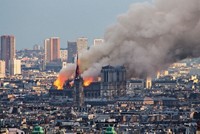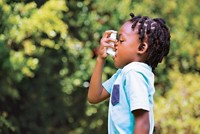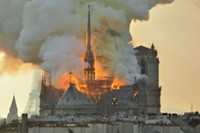Advertisement
Grab your lab coat. Let's get started
Welcome!
Welcome!
Create an account below to get 6 C&EN articles per month, receive newsletters and more - all free.
It seems this is your first time logging in online. Please enter the following information to continue.
As an ACS member you automatically get access to this site. All we need is few more details to create your reading experience.
Not you? Sign in with a different account.
Not you? Sign in with a different account.
ERROR 1
ERROR 1
ERROR 2
ERROR 2
ERROR 2
ERROR 2
ERROR 2
Password and Confirm password must match.
If you have an ACS member number, please enter it here so we can link this account to your membership. (optional)
ERROR 2
ACS values your privacy. By submitting your information, you are gaining access to C&EN and subscribing to our weekly newsletter. We use the information you provide to make your reading experience better, and we will never sell your data to third party members.
Pollution
No extra lead in Paris air after Notre-Dame fire
Air-monitoring laboratory finds no change in levels of several metals in the Paris air
by Laura Howes
May 9, 2019
| A version of this story appeared in
Volume 97, Issue 19

Airparif, which monitors air quality in Paris, has released more data after the blaze at the Notre-Dame de Paris Cathedral last month. The readings were taken in the city’s 18th arrondissement, which was not directly under the fire’s smoke plume, and showed no elevated levels of the metals lead, cadmium, arsenic, or nickel in the air. Earlier analysis had already shown that the fire did not cause air pollution in the city to exceed normal levels.
After the fire on April 15, an environmental advocacy group raised concerns about the levels of lead released from the cathedral’s spire and roof. Tests later revealed that particulates containing the neurotoxic element had fallen in the local area around the cathedral, but data were not immediately available for the air levels in the city.
Lead levels were historically monitored in Paris because of the use of lead in vehicle fuels. Since the additive has been banned, lead levels have dropped significantly, and Airparif now maintains only three sites to measure lead levels in the air. Normally, these values are published as an annual average, but after the Notre-Dame fire, Airparif scientists did a more detailed analysis.





Join the conversation
Contact the reporter
Submit a Letter to the Editor for publication
Engage with us on Twitter